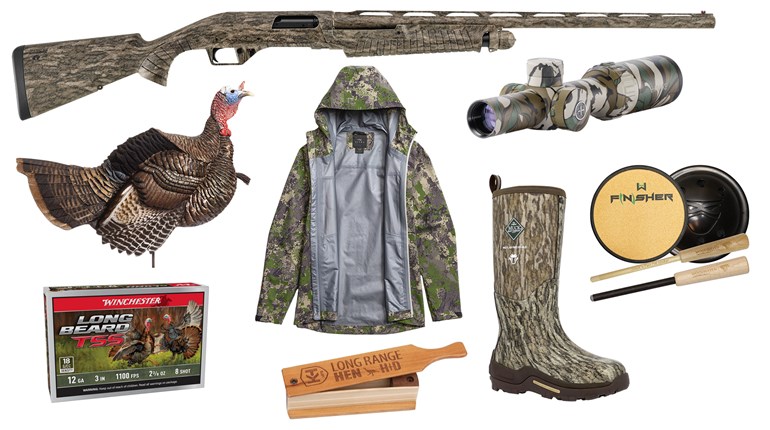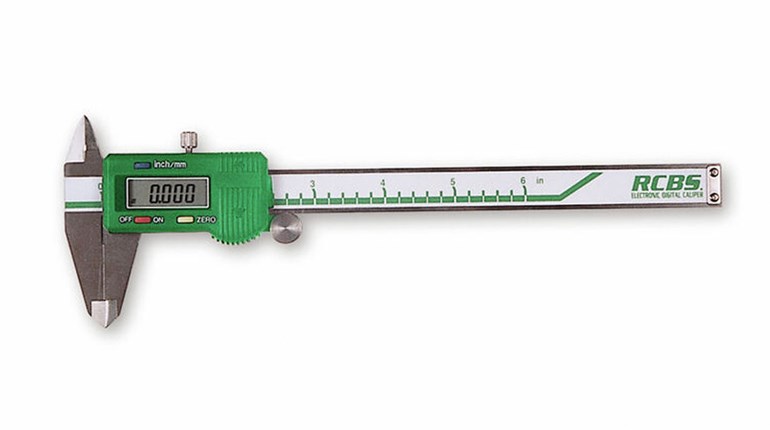
The best way to learn the trajectory of your bullet is to shoot at long range. That's not an easy option for many shooters, so we rely on ballistic reticles, drop charts or ballistic software to help us reach out and get hits. Exterior ballistics—the flight of the bullet between barrel and target—is just a physics problem. Yes, it's a complicated physics problem, but there's always a mathematical solution. Nikon has simplified this math problem so anyone can work it.
The Nikon Spot-On program is an Internet-based external ballistic calculator. It does several things common to most ballistic calculators. It also does some additional things that allow shooters to apply the calculations to their specific Nikon riflescope.
One problem many shooters have when working with ballistic programs is obtaining the muzzle velocity of a particular load and the ballistic coefficient (BC) of the bullet used. The BCs for most every bullet and the muzzle velocities for almost all currently manufactured ammunition are already integrated into the Nikon Spot-On program. You don't have to go look them up.

First, log on to the Nikon Spot-On website. You can view tutorials or go right to the calculator. The program provides trajectory data you can use with any riflescope, but is custom tailored to work with Nikon's products. If you have a Nikon riflescope the first thing you need to do is select your scope. To illustrate how this program works, I mounted a Nikon 2-8x32 mm scope with the company's BDC reticle on my Smith & Wesson M&P15-22 and chose that option.
Selecting your ammunition is the next step. Factory-advertised velocities are provided, but ideally you should input the exact velocity—an average velocity obtained with a chronograph. This is precisely what I did using CCI Velocitor ammo. CCI's advertised velocity was 1,435 fps, but the actual, average velocity from my rifle was 1,410 fps.

Next, enter the appropriate atmospheric and wind conditions. This is relatively easy to obtain by checking the weather on your computer or your smartphone. (More on smartphones later.) You might have to guess the actual wind direction and speed at your location. Now, you're ready to look at the trajectory data and go shoot.
There are several ways the data can be viewed. You can view a field-reference ballistic chart, a ballistic table or a ballistic graph. The information can encompass everything from drop, wind drift, downrange energy and velocity—even time of flight. These charts or graphs can be printed, exported to Excel or even turned into an Adobe PDF document.

The Spot-On program also correlates trajectory data to the additional aiming points on Nikon scopes with BDC reticles. It tells you at what range each point will correspond to the bullet's trajectory. Each BDC circle actually offers three aiming points; top, center and bottom. By clicking the "Expand BDC Circles" button, you can see the range to which each point correlates. Further fine tuning can be achieved by changing scope magnification.
With the printed results—based on a 25-yard zero—in hand, I stepped out to my range and zeroed the M&P15-22 at 25 yards. As directed by the Spot-On program, I then fired at a 100-yard target using the center of the first circle as an aiming point. The five-shot group impacted the target spot-nn, pun intended. I also checked the combination at 150 yards. The program told me the bottom of the third circle would correspond to 149 yards, so that was the aiming point I used. The group opened to almost 3 inches, but was about as close to center as practical.
This system works just as well with centerfire cartridges. Last year I used my custom .308 Win. Sisk Civilian Sniper Rifle on a Wyoming mule deer hunt. It was topped with a Nikon Monarch 2.5-10x42 mm riflescope with a BDC reticle. I was using Nosler Custom ammunition, and prior to the hunt ran the combination through the Spot-On program. My shot came at 329 yards on a grand old buck. I'd memorized the drop data, but also made a cheat sheet and taped it to the rifle's stock. Using the bottom of the second circle as an aiming point, one shot was all it took.
What if you handload or shoot a new cartridge not cataloged in the Spot-On program? Not a problem. The only cartridge-specific data you need is the muzzle velocity and bullet BC. There is even a section in the program to record handload data.
Case in point; I've been shooting the Wilson Combat 7.62x40 WT cartridge a lot. This is a .223 Rem. case necked up to .30 caliber. By inputting the chronographed velocity of the Wilson Combat ammo and the BC of the 125-grain Nosler Ballistic Tip bullet into the Spot-On program, I found the data provided was accurate out to 300 yards, which was as far as I checked it.
There are two other neat Spot-On features. The program will tell you how many clicks are needed to adjust the point of aim of any Nikon scope at the range you are shooting. And, what some folks do not realize is with a standard Nikoplex reticle you can use the taper point on the bottom vertical stadia wire as an additional aiming point—kind of like a makeshift BDC reticle. The Spot On program will tell you at what range this point coincides with your load's trajectory, and you can fine tune this range by altering the magnification, by the distance at which you zero your rifle or both.

Remember, I said we'd get back to the smartphones? There's an app for the iPhone and one soon to come for Android phones. When I worked the Spot-On calculations for the 7.62x40 WT, I used my iPhone. The data was double-checked with my computer and it was exact. Smartphones also make it really easy to obtain atmospheric conditions. Just tap the "current conditions" button, and the iPhone does the rest. Apps are also available to give you your current elevation.
Nikon has always made great scopes, and the Spot-On program, which is as neat as a pillow that is always cool on both sides, has made them even better. This is especially true for those wanting to reach out and touch something with a bullet. Keep it in mind when you are looking to purchase your next riflescope.






































